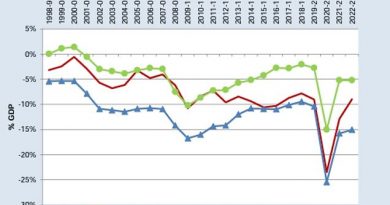Denmark burns millions of Covid-infected ‘zombie’ mink for electricity after beasts ‘rose from mass graves’
DENMARK is burning the bodies of "zombie" mink riddled with Covid to make electricity after they "rose from mass graves".
Around 17million mink were culled in a desperate bid to stop coronavirus spreading after scientists raised concerns about a powerful mutant strain spreading through the animal population.
But after many were tipped into a mass burial site at the Holstebro military complex and covered in soil in November, chilling images showed hordes of carcasses resurfacing.
This week, around 30 tonnes of rotting mink have been exhumed and mixed with household waste before being shovelled into furnaces at an incinerator in the area.
Another load from a mass grave of two million mink is being taken to the incinerator today for test cremations which, if successful, could see Måbjergværket powerplant buy 1,000 tonnes of dead mink to fuel its 13 incinerators around Denmark.
All the culled "zombie" mink – originally farmed for fur – could be dug up and burnt by mid-July, reports the Telegraph.
A crane driver who has worked at the plant for more than a decade said that waste they burn day-to-day often contains bones and dead animals anyway.
Jes Simonsen told a local TV station: "It is always exciting when something new happens. I do not fear it."
The site's chairman Niels Ulrik Nielsen said the smell is no different either.
“We did not know in advance what problems the mink would cause but they are part of the operation now here," he told Danish media.
"They will become heat for Mr. and Mrs. Jensen and electricity for the grid."
The tests come months after "zombie" mink appeared to rise from mass graves in November- but officials assured the public that the spooky phenomenon was the result of natural forces.
Police spokesman Thomas Kristensen told DR: “Gases are formed during decomposition, which causes the bodies to swell a little and, in worst cases, they get pushed out of the ground.”
He admitted there was a risk of infection from the carcasses as they could still have the virus on their fur, but were likely to be less infectious than live mink.
The mink were also treated with disinfectant and covered with lime when buried to reduce the risk of the virus – but the area has been guarded to deter any curious locals.
Most read in News
BITTER CHILL Snow to BATTER Britain 'within weeks' says Met Office as temps to DROP further
New evidence about chief Maddie suspect leaves investigators 'shocked'
PM held indoor birthday bash at height of lockdown in fresh partygate
Tributes to 'absolutely amazing' lad, four, killed in off-road bike crash
Denmark, the world’s largest mink fur exporter, produces an estimated 17 million furs per year.
The strain that led to the cull, known as "Cluster Five", was found on 207 out of the country's 1,139 fur farms. It appears to have been stamped out now.
It saw 250,000 people living in the North Jutland region, where most of the farms are located, put into lockdown in November.
Source: Read Full Article












